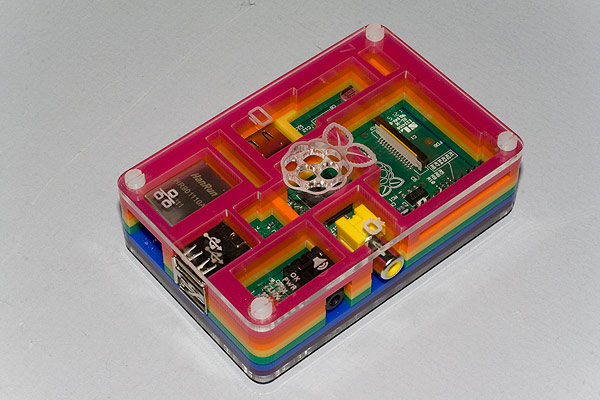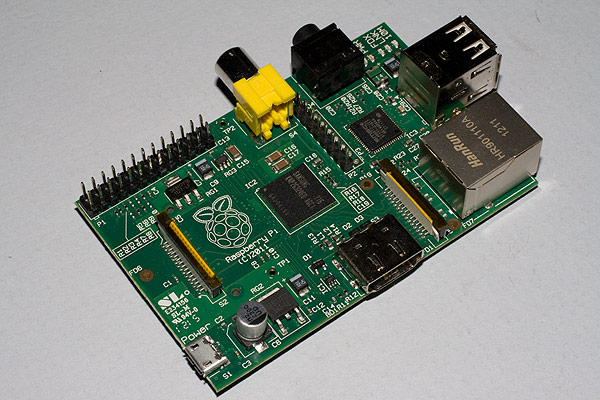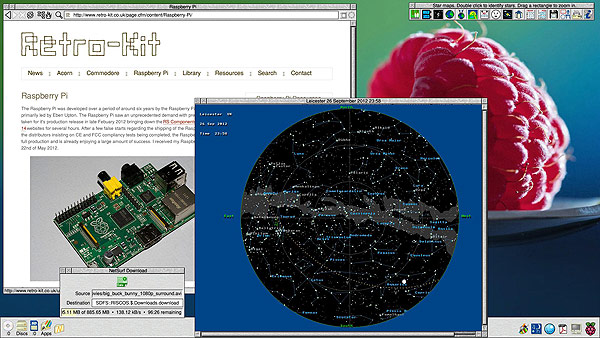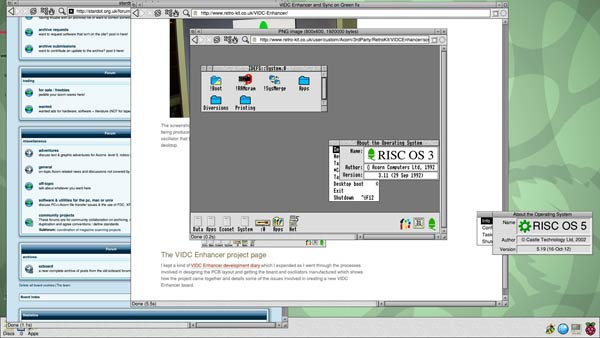Raspberry Pi
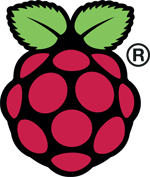 The Raspberry Pi was developed over a period of around six years by the Raspberry Pi foundation, primarily led by Eben Upton. The Raspberry Pi saw an unprecedented demand with pre-orders being taken for it's production release in late February 2012 bringing down the RS Components and Element 14 websites for several hours. After a few false starts regarding the shipping of the Raspberry Pi due to the distributors insisting on CE and FCC compliancy tests being completed, the Raspberry Pi went into full production and in 2015 it became UK's best selling computer of all time.
The Raspberry Pi was developed over a period of around six years by the Raspberry Pi foundation, primarily led by Eben Upton. The Raspberry Pi saw an unprecedented demand with pre-orders being taken for it's production release in late February 2012 bringing down the RS Components and Element 14 websites for several hours. After a few false starts regarding the shipping of the Raspberry Pi due to the distributors insisting on CE and FCC compliancy tests being completed, the Raspberry Pi went into full production and in 2015 it became UK's best selling computer of all time.
I received my first Raspberry Pi (pictured below) which was a Model B on the 22nd of May 2012 and since then, the Raspberry Pi has undergone several revisions. The latest version is the Raspberry Pi 3 which includes many improvements and refinements over the original whilst maintaining a low cost of entry.
Being aimed squarely at the educational market and attempting to make the world of computing as accessible as possible, the Raspberry Pi is a low cost, ARM based computer the size of a credit card. The initial models called the Model A and Model B are widely seen as the successor to the legacy of Acorn Computers with the model names being inspired by the Acorn BBC Micro Model A and Model B.
The Raspberry Pi uses an SD card to store the bootable kernel for the chosen operation system to boot from and the boot sequence can then be transferred to an external USB drive which can provide extra storage.
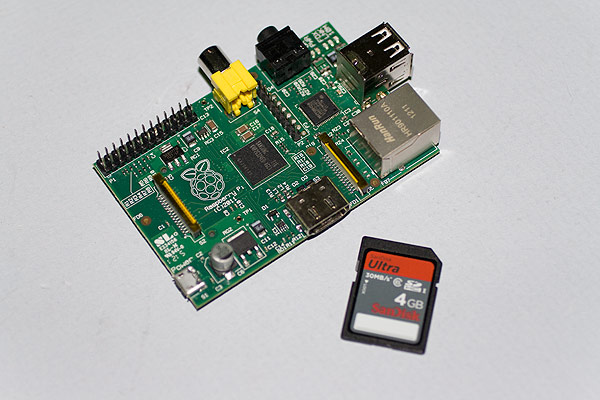
At the time of writing, there are several operating systems that are in their pre-alpha, alpha or beta stages of development including RISC OS and Debian and have varying degrees of support for the Pi hardware. UPDATE: On the 5th of November 2012 most of the operating systems have progressed sufficiently to now have official releases some of which are still regarded as Alpha but on the whole are very stable. RISC OS is one of these with the second official Release Candidate of RISC OS for the Raspberry Pi being announced on the day of writing.
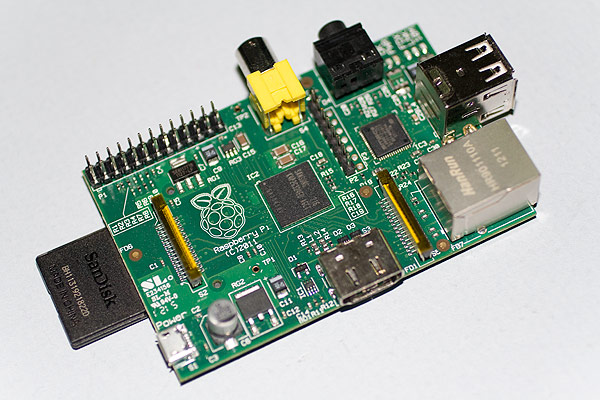
Even in its early stages, using RISC OS was reasonable and the Pi is able to network to original Archimedes machines fitted with Ethernet cards over the RISC OS ShareFS protocol and the screenshot below shows many applications running on the Raspberry Pi that have been launched directly from shared drives on my Archimedes A410/1 (which runs RISC OS 3.11) along with native RISC OS 5 applications such as NetSurf.
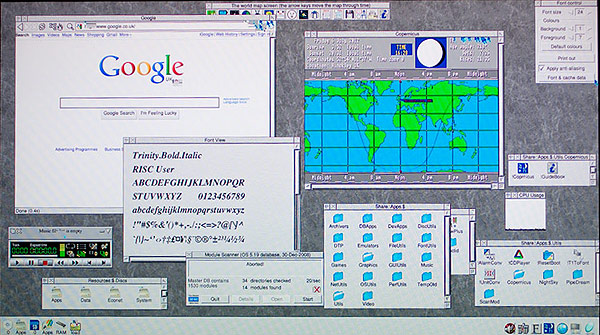
The progression of the Raspberry Pi RISC OS Alpha ROMs showed great progress in the weeks since the screenshot above was taken. Sound is now supported and the issues with display corruption around the mouse pointer have been eliminated. The developers at ROOL have been making hundreds of updates to the Raspberry Pi ROM images and RISC OS source code and all the effort is beginning to pay off as can be seen in the screenshots below which you can click on to enlarge to full size 1920x1080 resolution.
The following screenshot shows Netsurf browsing the Retro-Kit website and Copernicus displaying the entire night sky as seen from Leicester UK at 23:00 on the 26th of September 2012.
After the numerous unofficial releases of RISC OS images for the Raspberry Pi, the first official release of RISC OS was announced on the 26th of October. Quickly following on from this, RISC OS Open announced the second official Release Candidate of RISC OS for the Raspberry Pi on the 5th of November 2012.
Casing the Raspberry Pi
There are plenty of ways to case your Raspberry Pi. I chose to buy a Pibow as some of the proceeds are given the the Raspberry Pi foundation and other charities.
